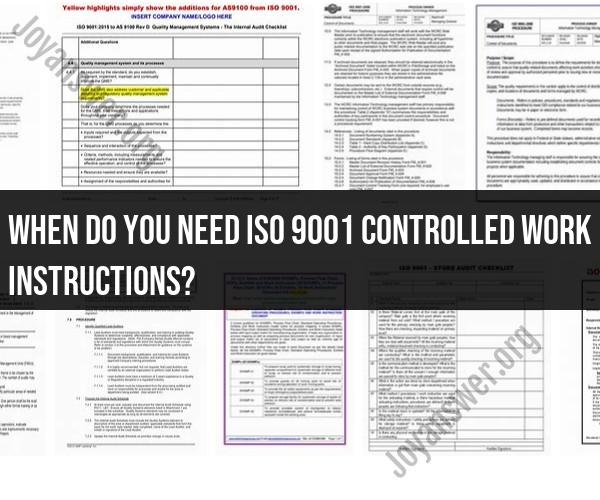When do you need ISO 9001 controlled work instructions?
The implementation of ISO 9001 controlled work instructions is typically required in situations where precise and consistent processes are critical to achieving quality objectives and meeting customer requirements. ISO 9001 is an international standard for quality management systems (QMS), and it emphasizes the importance of documenting processes and procedures to ensure quality and consistency. Controlled work instructions are a specific type of documented procedure used to guide employees in performing tasks and activities within an organization.
Here are some situations and contexts in which implementing ISO 9001 controlled work instructions is beneficial and often necessary:
Complex Processes: When an organization has complex or intricate processes that require precise steps to be followed consistently to achieve the desired results, controlled work instructions can provide clear guidance to employees.
Critical Operations: In industries where the consequences of errors or defects are significant, such as aerospace, healthcare, or manufacturing, controlled work instructions help reduce the risk of quality issues, accidents, or non-compliance.
Regulatory Compliance: Some industries are subject to strict regulatory requirements, and controlled work instructions can help ensure that operations are performed in compliance with relevant regulations and standards.
Training and Onboarding: Controlled work instructions are valuable for training new employees or cross-training existing staff. They provide a standardized and consistent way to teach employees how to perform specific tasks.
Consistency and Standardization: Organizations that prioritize consistency and standardization in their processes often use controlled work instructions to ensure that all employees perform tasks in the same way, regardless of location or shift.
Customer Expectations: If customers have specific requirements or expectations for how products or services should be delivered, controlled work instructions can help ensure that these expectations are consistently met.
Continuous Improvement: As part of the ISO 9001 QMS, organizations are encouraged to monitor and improve their processes continually. Controlled work instructions can serve as a baseline for evaluating and optimizing processes over time.
It's important to note that not all processes within an organization may require controlled work instructions. The decision to implement them should be based on a risk assessment and the criticality of the process. Organizations should also consider the resources available for documentation and the practicality of maintaining and updating controlled work instructions as needed.
Ultimately, the goal of ISO 9001 controlled work instructions is to enhance quality, reduce errors, and improve consistency in processes, leading to increased customer satisfaction and organizational success.











